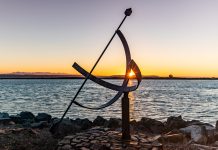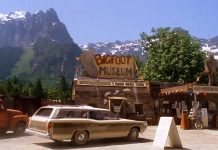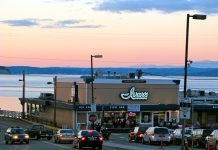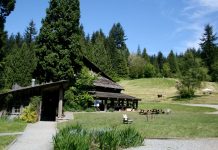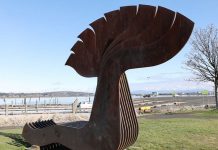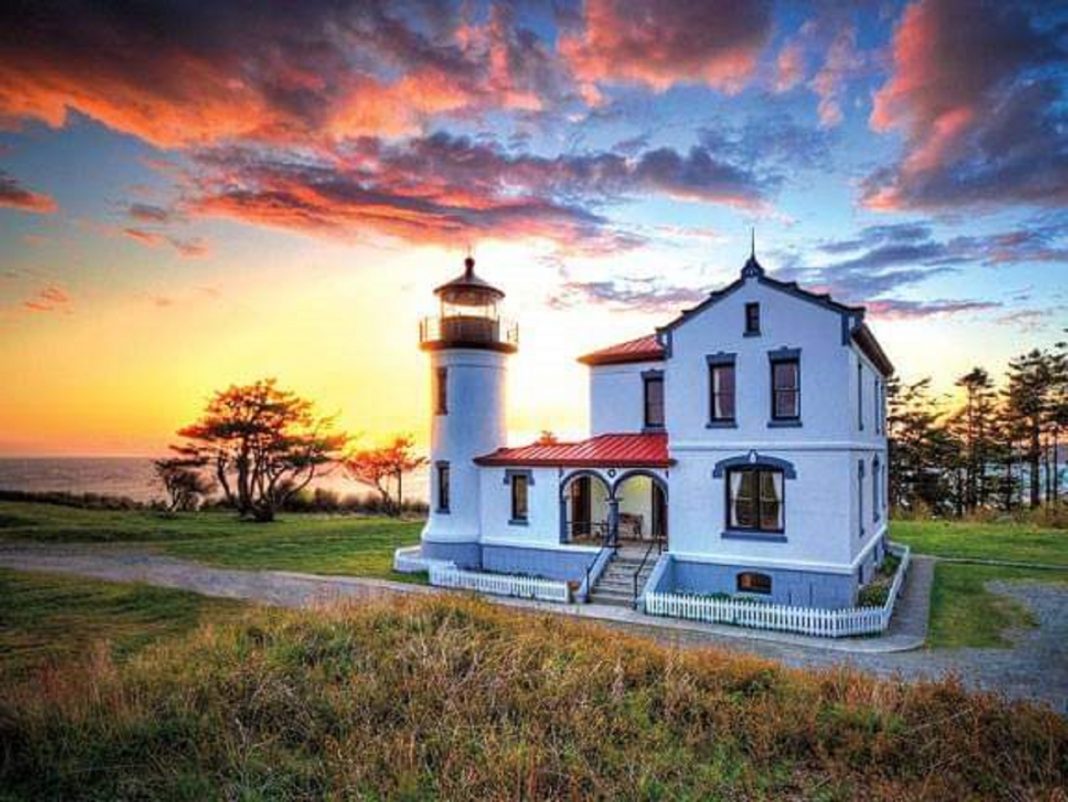Even on the darkest of nights, you can still find a seaside light to guide your way back home.
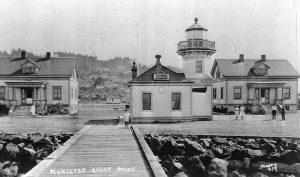
The first lighthouse to ever be built in the United States was created in 1716 at Boston Harbor, Massachusetts. Ever since these beacons for wayward travelers have been lighting the path so that those at sea may find their way to our shores. For our own state of Washington, lighthouses have been guiding ships since 1856, when Cape Disappointment’s lantern was first lit at the raging mouth of the Columbia River.
Today, Washington features a total of 26 lighthouses, with 18 of those actively keeping the lights on to guide us all home. Of these 26, three lighthouses are found right here in Snohomish County within the Everett and Whidbey Island communities.
Mukilteo Light Station and Lighthouse Park
609 Front Street, Mukilteo
425.263.8180
As Everett was developing into a prominent shipping port during its early history, it was determined by the United States Lighthouse Board that a lighthouse was needed to facilitate the safe passage of the high volume of shipping vessels making their way through strong tides and inclement weather that was typical of the regional climate.
Once funding was secured, construction commenced in 1905, and the Victorian-style Mukilteo Light Station lit up the sky for the Snohomish community for the first time when it became operational in 1906. It was created using the Carl Leick design found at other northwest lighthouses, such as the Ediz Hook lighthouse and Oregon’s Cape Arago lighthouse.
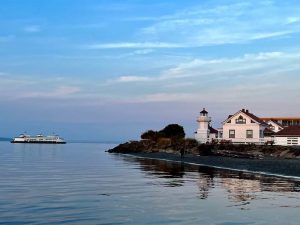
Built entirely out of wood, the Mukilteo Light Station stood apart from its contemporaries as most lighthouses of that era were constructed using brick and concrete. A foghorn heard up to eight miles away was also installed, and two Victorian-style homes were also built on the property that was used by Coast Guard personnel until 1996. For the light itself, a revolving Fresnel lens manufactured in Paris, France, in 1852 was brought in as the lighthouse’s beacon of brilliance. Altogether the project cost $27,000.
Eventually, the lighthouse was added to the National Register of Historic Places in 1977, and in 2001, the U.S. Coast Guard turned over ownership of the lighthouse to the City of Mukilteo. Today the lighthouse is managed by the Mukilteo Historical Society and the Mukilteo Recreation Department, with the grounds and interior open to the public so that all can explore the history and charm of this beacon of light as they stroll the shoreline.
Bush Point Lighthouse

Lake Avenue, Freeland
Northwestern shore of South Whidbey Island
The narrowest passage to ever be sailed upon in North Puget Sound is the passage between Bush Point on Whidbey Island and Marrowstone Island, so it was only natural that it would need a lighthouse. However, the creation of the Bush Point Lighthouse wouldn’t come until much later.
Instead, the passage was first marked by a private light maintained by the Farmer family, early settlers of Bush Point, who would hang a kerosene lamp from wooden gallows to aid mariners each night.
The Lighthouse Board eventually established a post light on May 10, 1894, but the tubular-lantern light would not be enough in the end. On August 15, 1908, disaster struck when the 502-foot-long armored cruiser USS Colorado ran aground on Liplip Point, the southwest tip of Marrowstone Island.
Afterward, the Lighthouse Board did an investigation to conclude the reason why the shipwreck happened. They then requested funds for new or improved lights and fog signals at six points to improve navigation along the small passageway, one of which was Bush Point.
Improvements were made along several key trouble points in the following years, but Bush Point remained marked by just a post light for the next decade. Finally, the Bureau of Lighthouses requested funds to establish a permanent light and fog signal station at or near Bush Point on Puget Sound.
Despite extraordinary evidence of the strong and irregular currents, thick fogs, and by this point, several serious collisions along the passage, the Bureau would repeat its request several times before being allotted $10,000 for an automatic acetylene light at Bush Point.
The project, expected to be completed in 1931, was not finished until 1933 as they built the twenty-foot pyramidal tower lighthouse with reinforced concrete.
Thus, the Bush Point Lighthouse was complete with a light that would be on for five seconds and then off for five seconds, with a horn atop the tower that sounded a five-second blast every thirty seconds when needed. Though its fog signal was discontinued in 1976, to this day, the tower still exhibits light to help mariners navigate through the narrow passage of Bush Point.
Admiralty Head Lighthouse
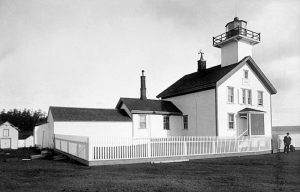
1280 Engle Road, Coupeville
360.678.1186
Not too far up the coast is another lighthouse that shares the same Carl Leick design as the one in Mukilteo. However, this is not the original lighthouse that was built on the site. The earliest Admiralty Head Lighthouse, also called Red Bluff Lighthouse, served as a beacon for those at sea within the Whidbey Island community in Coupeville. As the first lighthouse in Puget Sound, it was completed in 1861 and later demolished in 1928.
Before the initial lighthouse’s creation, the United States purchased ten acres on the headland for only $400. The original lighthouse was constructed three years later and featured a wooden, two-story house with a tower projecting from the gable and a fourth-order Fresnel lens visible at 16 miles. Eventually, the need to construct Fort Casey in 1890 during the Spanish-American War forced the relocation of the lighthouse to a spot close to the site of the present one.
When it was demolished, a second 30-foot-tall lighthouse was built in its place in 1903. The new lighthouse featured a keeper’s quarters and conical tower, was composed of brick and stucco and incorporated thick walls meant to withstand earthquakes and the concussion of Fort Casey’s guns nearby.
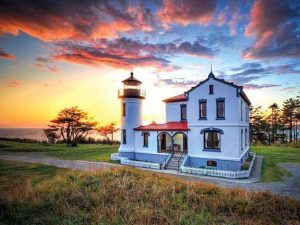
It remained a constant source of light for those at sea until it was deactivated in 1922. Its lantern room was moved to the New Dungeness Lighthouse a few years later, in 1927. It sat vacant until World War II when Fort Casey was reactivated, where it was then used as a barracks for the Army’s K-9 Corps that patrolled the fort and nearby beaches at night.
After the war, the lighthouse stood empty again until the Island County Historical Society initiated a restoration effort that would continue on and off in the ensuing years. In 2012, a historically accurate reconstruction of the lantern room was installed atop the tower after being created by student volunteers from three Whidbey Island high schools. Finally, in early 2020, a significant restoration effort was initiated after Washington’s Parks and Recreation Department assumed control of the lighthouse five years prior.
Today, the lighthouse is home to a gift shop and a museum, shedding light on its history instead of the waves.
Now ships in the night continue to pass by the Everett and Whidbey Island communities safely in Snohomish County, thanks to these historic lighthouses that continue to keep the lights on.


